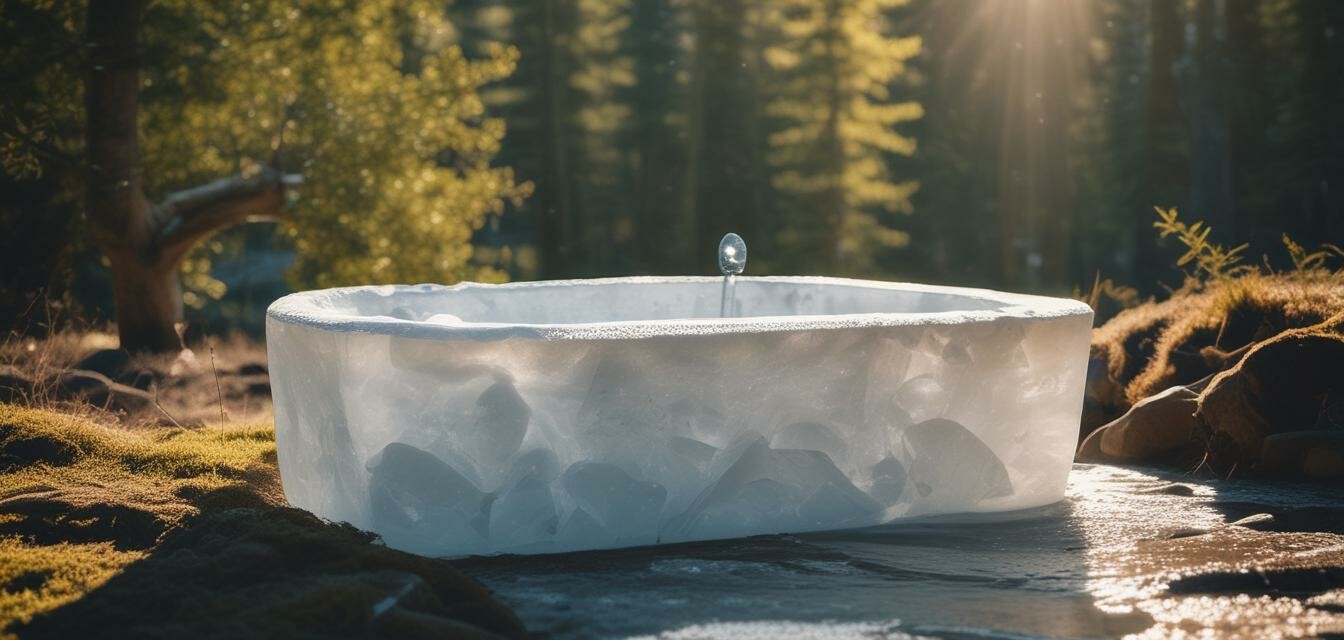
Ice Baths and Mental Health: Current Insights in 2025
Key Takeaways
- The connection between ice baths and mental health is gaining traction in recent research.
- Regular exposure to cold therapy may assist in stress management and emotional well-being.
- Understanding personal tolerance to cold is crucial for effective recovery sessions.
- DIY ice bath setups provide a cost-effective alternative for mental health support.
- Innovative trends and techniques in ice baths are continually evolving.
As we progress into 2025, the exploration of ice baths and their relationship with mental health is becoming a hot topic. With an increase in awareness and accessibility to cold therapy, understanding its potential benefits is essential for anyone considering this recovery method. This article delves into the current insights regarding ice baths and mental health, highlighting the latest research, trends, and actionable tips for setting up your own ice bath at home.
The Science Behind Ice Baths and Mental Health
Recent studies have begun to uncover the psychological benefits of ice baths, suggesting that exposing the body to cold may influence mental health positively. Some of the theories include:
- The release of endorphins triggered by cold exposure.
- Activation of the parasympathetic nervous system, promoting relaxation.
- Improved circulation that may affect brain function.
Current Research Insights
Research is still emerging, but here are key findings from 2025:
| Study | Findings | Conclusion |
|---|---|---|
| Cold exposure and anxiety levels | Reduced anxiety symptoms in participants after regular ice baths. | Cold exposure may serve as a complementary therapy for anxiety issues. |
| Cold exposure and mood elevation | Participants reported improved mood after consistent exposure to ice baths. | Regular sessions could enhance overall emotional well-being. |
| Effects on stress levels | Notable decrease in cortisol levels post-ice bath. | Potential in stress management routines. |
Latest Trends in Ice Bath Therapy
As more individuals embrace cold therapy, new trends emerge that enhance the accessibility and effectiveness of ice baths:
- DIY Ice Bath Solutions: Many are opting to create their own setups at home, making ice baths more accessible.
- Portable Ice Bath Gear: New portable tools help in achieving ideal cold therapy wherever you are.
- Integration with Technology: Innovative products offer temperature control and tracking for optimal cold exposure.
- Community Support: Online platforms provide shared experiences and tips for newcomers.
Setting Up Your DIY Ice Bath
Creating a DIY ice bath setup at home is easier than ever. Here are steps to get started:
- Select a Suitable Container: Use a sturdy tub or a large plastic container.
- Water and Ice: Fill the container with water and add ice cubes to reach your desired temperature.
- Location: Choose a quiet and comfortable spot for your ice bath to relax.
- Check Temperatures: Use a thermometer to assess the water temperature accurately.
- Duration: Start with shorter exposure times and gradually increase as your body adapts.
Tips for Effective Ice Bath Sessions
- Start slow: If you're new to ice baths, limit your time in the water.
- Focus on breathing: Slow, deep breaths can help you manage the cold.
- Hydrate before and after: Keep your body hydrated for optimal recovery.
- Listen to your body: Always pay attention to your comfort level.
Final Thoughts
As we learn more about the connection between ice baths and mental health, it is clear that this practice could serve as an effective tool for emotional recovery and stress management. The evolution of DIY setups allows more individuals to benefit from cold therapy at home. As discussed, various current studies indicate potential mental health benefits. Nevertheless, it is essential to implement safety measures and pay attention to your personal comfort levels during your sessions.
Pros
- Accessibility to cold therapy for everyone.
- Potential to enhance emotional well-being.
- Inexpensive DIY solutions available.
- Flexible scheduling for self-care routines.
Cons
- Individual tolerance levels vary, not everyone may find it beneficial.
- Cold exposure may require adaptation time.
- Safety concerns if not done correctly or for extended periods.
Stay Updated with Our Blog
For more insights on ice baths and recovery, visit our News and Trends section for the latest updates and research in this exciting field.
